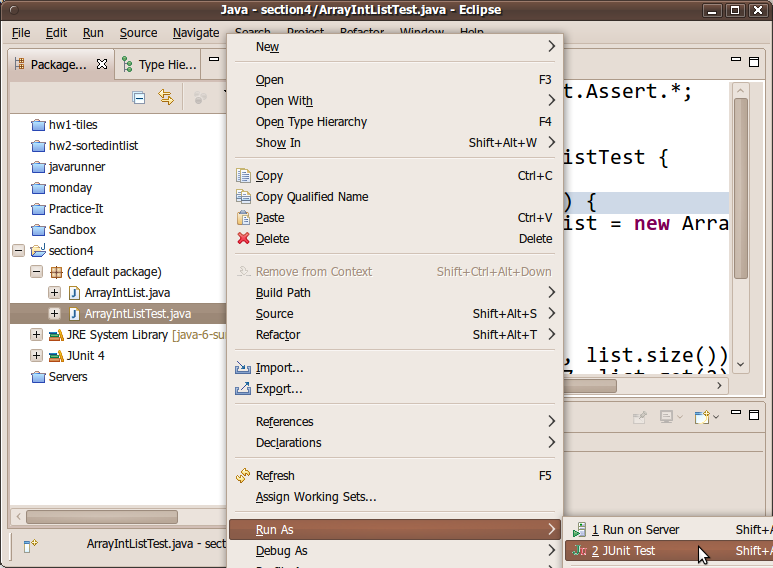
Note that it can also run tests that use the JUnit 4 API (referred to as “vintage”). Projects that use tools like Gradle, Maven, or Ant have the added advantage of being able to run tests as part of the build process.Īs a sample Gradle project for JUnit 5, see the Gradle section of the JUnit user guide and the junit5-samples.git repository. JUnit tests can also be run and reported on by continuous integration systems like Jenkins. A build with any failing tests should be considered failed, regardless of whether the problem is in the production or the test code– this requires discipline from the team and a willingness to give highest priority to resolving failing tests, but it’s necessary to adhere to the spirit of automation. Tests should always run at build time, especially unit tests. JUnit tests can be run directly in IntelliJ, but they can also be run in other IDEs like Eclipse, NetBeans, or even the command line. Some teams may find JUnit 5 ready for use, while others may continue using JUnit 4 until 5 is officially released. It better supports language features introduced in Java 8 and includes other new, interesting features. JUnit 5 (with the Jupiter programming and extension models) is in active development. The JUnit test framework is a common, free, and open source tool for testing Java-based projects.Īs of this writing, JUnit 4 is the current major release, having been released more than 10 years ago, with the last update having been more than two years ago.


While most of this article will focus on writing robust unit tests and utilizing stubbing, mocking, and dependency injection, we will also discuss JUnit and integration tests. Automated software tests are critically important to the long-term quality, maintainability, and extensibility of software projects, and for Java, JUnit is the path to automation.


 0 kommentar(er)
0 kommentar(er)
